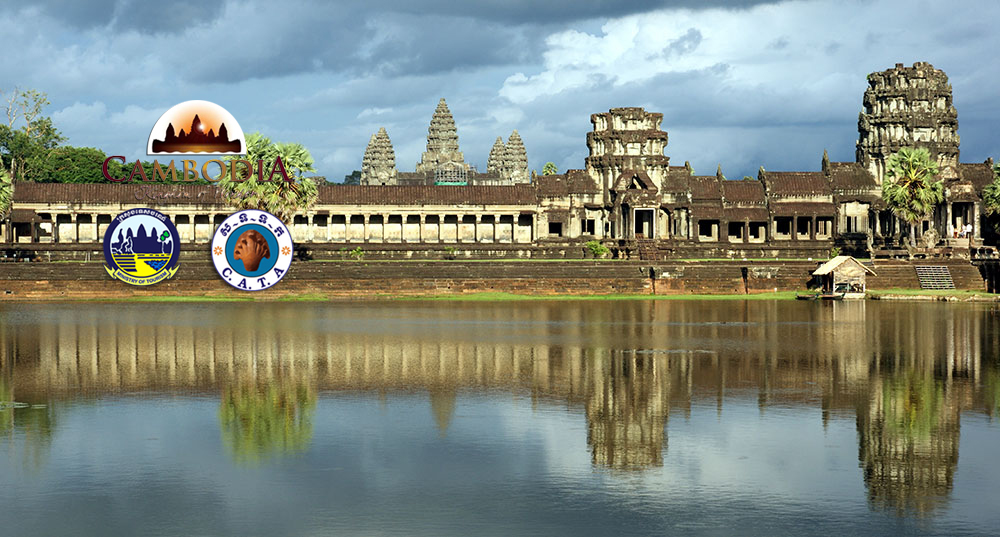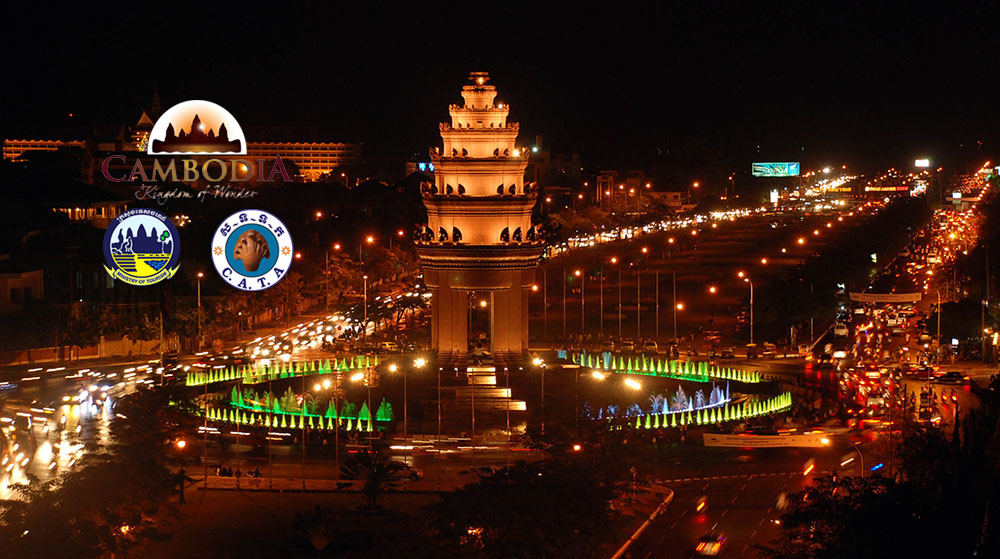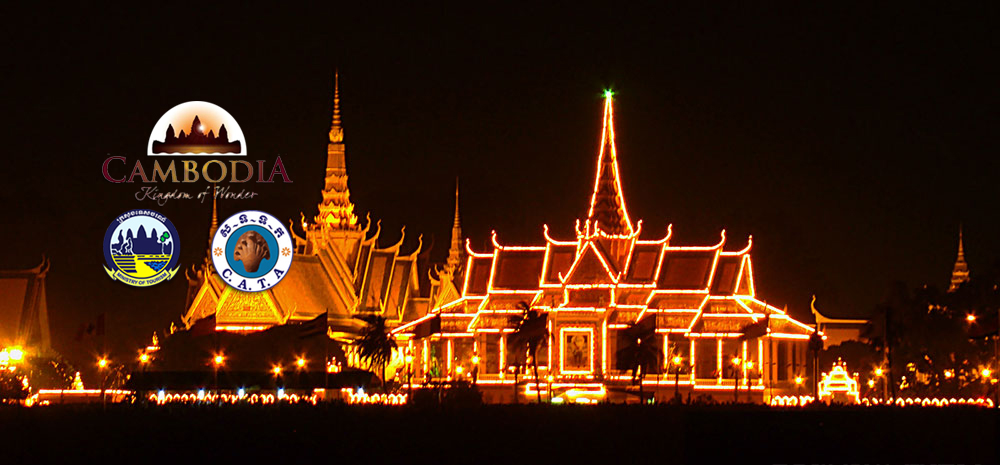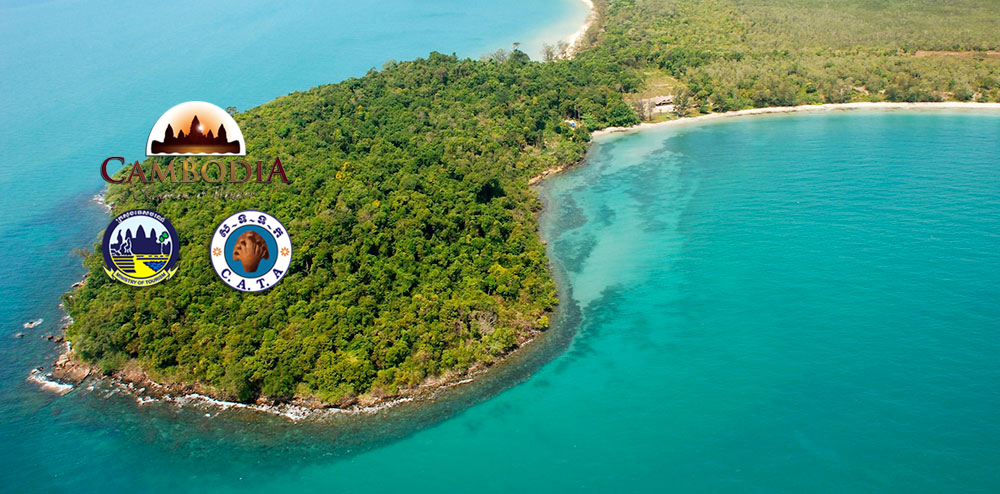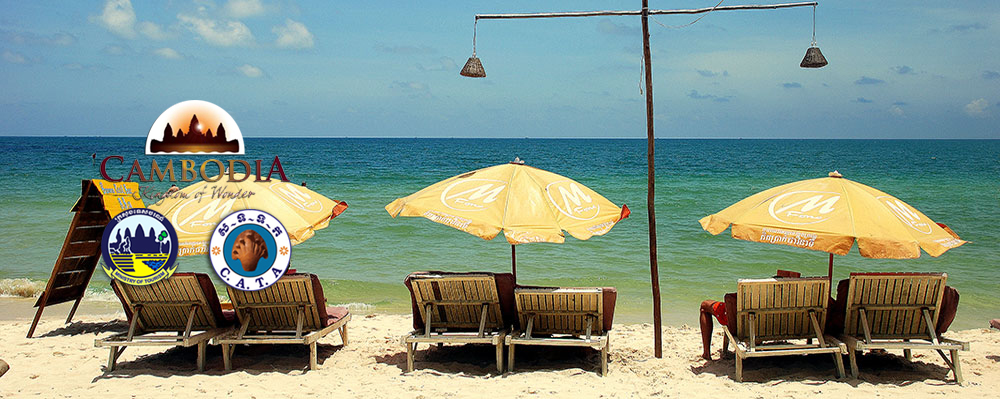 Phnom Penh Phnom Penh
Phnom Penh City knows as the Capital and the largest city in Cambodia. It’s also being a pearl of Asia by French colonial building. This city located on the four face river call Tonle Chak tomok where the meeting place of upper Mekong river, sub Mekong river Tonle Sap river , Tonle Basak. It is become the capital city of Cambodia in 1865 with total area 678.46 Km².
The name of this city is come from the story of Doun Penh (Grandma Penh) was found the Buddha statues the dead Koki tree float along the Mekong river. Daun (Grandma) Penh brought the statues and order the people around to build the hill as the temple to house that statue called Wat Phnom. Later on start call that area by her name Phnom Doun Penh , Phnom refer to the hill , Doun Penh is the name of the grandma , so now a day is become Phnom Penh.
 Wat Phnom Wat Phnom
Wat Phnom hill is about 27 meters high located in central of Phnom Penh. it is the historical site for visitor , this hill were constructed in 1372 or 1422 onward and it reconstruction on 1926. The history of Phnom penh is likely the same the history of Phnom Penh.
 Independence Monument Independence Monument
The Independence Monument in Phnom Penh, capital of Cambodia, was built in 1958 for Cambodia's independence from France in 1953. It stands on the intersection of Norodom Boulevard and Sihanouk Boulevard in the centre of the city. It is in the form of a lotus-shaped stupa, of the style seen at the great Khmer temple at Angkor Wat and other Khmer historical sites. The Independence Monument was designed by the influential Cambodian modern architect Vann Molyvann.
During national celebrations, The Independence Monument is the center of activity. A ceremonial flame on the interior pedestal is often lit by a royal or high official on these occasions, and floral tributes line the stairs. Every year, The Independence Monument is visited by foreigners and locals alike.
 Royal Palace Royal Palace
The Royal Palace is establishment in 1866 by King NORODOM after Oudong. The Royal Palace of Cambodia is a good example of Khmer architecture featuring its layout of the defensive wall (kampaeng), throne hall (preah tineang), Temple of the Emerald Buddha (Wat Preah Keo Morakot), stupas (chedei), towering spires (prang prasat) and mural paintings. The Royal Palace of Phnom Penh covers an area of 174,870 square metres (402m x 435m) .
The palace has always been a popular tourist attraction in Phnom Penh. Visitors are able to wander around the Silver Pagoda compound and the central compound containing the Throne Hall and Chan Chhaya Pavilion. The King's living area, which actually takes up half of the total palace ground area, including Khemarin Palace, Villa Kantha Bopha, Serey Mongkol Pavilion, royal gardens, and a number of other buildings and pavilions, is closed to the public.
 National Museum National Museum
The museum houses one of the world's largest collections of Khmer art, including sculptural, ceramics, bronzes, and ethnographic objects. The Museum’s collection includes over 14,000 items, from prehistoric times to periods before, during, and after the Khmer Empire, which at its height stretched from Thailand, across present-day Cambodia, to southern Vietnam. The Museum buildings, inspired by Khmer temple architecture, were constructed between 1917 and 1924, the museum was officially inaugurated in 1920, and renovated in 1968.
Market Signseeing
This market is the crowd place where you can see all the activity of the local people. Every market is unique that could be interesting to see and also for shopping. In phnom penh a couple market interesting to see such as Russian market, Central market, Night market.
Choeung Ek memorial (The killing fields)
During the Khmer Rouge regime the area became one of the infamous killing fields. This particular killing field is the site of the brutal executions of more than 17,000 men, women and children, most of whom had first suffered through interrogation, torture and deprivation in the S-21 Prison (now the Toul Sleng Genocide Museum) in Phnom Penh. The Choeung Ek Memorial is now a group of mass graves, killing areas and a memorial stupa containing thousands of human skulls and long bones. The memorial is about a 20-40 minute drive from the center of Phnom Penh.
 Toul Sleng Toul Sleng
Prior to 1975 Toul Sleng was a high school but under the Khmer Rouge it was used as a torture facility. The building now serves as a museum and a memorial. Photos of some of the victims as well as paintings by a survivor hang on the walls. The complex has been preserved as the KR left it.
|
